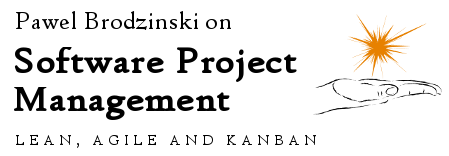The other day we had a brief discussion at Lunar Logic on an idea that the company should provide hand cream for us. While normally we don’t really discuss such petty expenses, this time quite a few people got involved.
One could say that the discussion itself cost the company more than a stash of hand cream that would suffice for several years. And they would be right.
Why was I involved then? And why would I write about it afterwards?
The thing is we don’t make decisions in isolation. Of course we can look at any decision in individual context. It’s all about hand cream and several dollars, right?
Not really. Or at least not only. The meta-decision that was being made was about what is the extent to which the company provides its employees with stuff. It was about setting, or rather resetting, what benefits are available.
Of course, at any company there are things that almost everyone would use, like coffee and tea, paper towels etc. These are no-brainers.
But then, very quickly we enter the land of less obvious options. Like a hand cream. Ultimately not everyone would be using it. I’m betting around half of people maybe. So we’re making a small nice gesture to some.
The question is: should we be making such small nice gestures to other groups?
We have quite a bunch of people who are cooking lunches at the office. Should we buy cooking oil for them? Or spices? These would all be small expenses after all.
So how about free food available at the office? Well, given that we have a couple vegans, healthy load of vegetarians, some burger lovers, a diabetic, a couple people on gluten-free diet and a couple more trying to lose a few pounds there would always be someone left out. These aren’t obvious decisions anymore.
These kind of calls are really about deciding about where we set the limits. What is acceptable. It’s not about hand cream. It’s about what rationale would be enough to justify an expense on the account of the company. We are talking about norms.
Have I just said “norms”? Oh well, it seems we are talking about organizational culture now.
organizational culture
the behavior of humans who are part of an organization and the meanings that the people react to their actions
includes the organization values, visions, norms, working language, systems, symbols, beliefs, and habits
Simply put organizational culture is a sum of behaviors of everyone in an organization. Not only behaviors themselves, though, but also what drives these behaviors: shared values, common principles, rules and norms.
This is why I got involved in the discussion about hand cream. The trigger was realization that we are just about to change a norm and I’d rather have an explicit discussion about that beforehand. Such a change may affect the common attitude from “we’re not doing such things here” to “yeah, we’ve seen that happening before so it’s OK.”
What’s more, giving all sorts of benefits away is not something that can be taken back seamlessly. As Daniel Kahneman in his profound book Thinking Fast and Slow points we think differently about something that we gain than about something that we lose.
In other words getting hand cream is all fine and nice but almost instantly it becomes a new norm that hand cream is there. We’ve just set new expectation level. Once we stop supplying cream we would perceive that as a loss. The cost of removing a benefit would be bigger than a gain we got from introducing it.
That’s why we can’t label changes that affect organizational culture as safe to fail. Like in: let’s try the hand cream thing and if people don’t care we’ll just stop buying it. When we are touching organizational culture there’s no rollback button. Even when we technically bring the situation back to the square one, culturally it’s different because we have a new experience so we look at things differently.
That’s why I will get involved occasionally in discussions like the one about hand cream. And that’s why it was worth a blog post.


 Subscribe RSS feed
Subscribe RSS feed Follow on Twitter
Follow on Twitter Subscribe by email
Subscribe by email



3 comments… add one
All very good points on where to draw the line on the sand and what happens with the balance in expectations once you change it. Good read, really was enjoying it. It could be applied to do many different areas in the organization /program/project/day to day life.
Ah, Pawel… can’t agree more. One faces these every now and then in every company. Explicit policies might come to the rescue :-)
BTW, as each good story, this post should have an end – what was the decision?
@Michal – The trick with explicit policies is that they come at a price. The more policies you have the more bureaucratic organization you create and that itself has impact on organizational culture as well.
Not only is it about remembering about all the rules one needs to follow but it also disables some areas for autonomy. If there is a rule whether we buy hand cream or not one is unlikely make an autonomous decision about that. Hey, there’s a rule for that so why bother, after all?
With a small size of a company I prefer to err on the side of too few rules rather than too many. Corollary to that is the observation that it’s much easier to introduce a new rule than to remove an old one.
Anyways, the decision? We provide hand cream now.
While I personally disagree with the decision I’m glad that it’s been taken a) against my judgement and b) by someone else autonomously. The value we gained from embracing autonomy was well worth it.